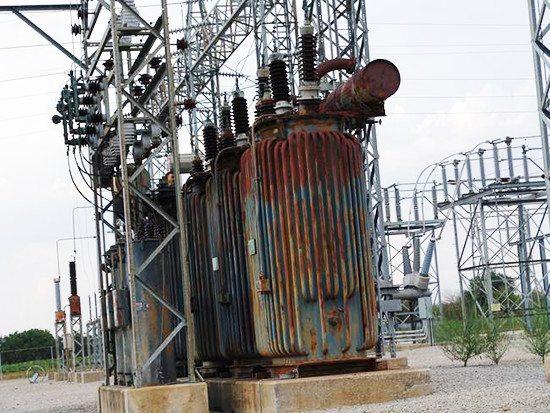An electrical substation is an installation that establishes the appropriate voltage levels for the transmission and distribution of electrical energy. Its main equipment is the transformer, so it must be in optimal conditions for it to function properly.
The following transformer inspections are recommended for routine preventive maintenance in a medium voltage electrical substation:
Indicator readings
- Inspection: one month after initial energization and annually thereafter
Indicator readings, ambient temperature and kVA load must be measured and recorded. Any abnormal reading means further inspection or diagnosis is necessary. If pressure/vacuum readings and fluid levels indicate a possible tank leak, a pressure test should be performed per instructions.
The tank must be repaired immediately to prevent more serious damage to the transformer.
cooling fans
- Inspection: annual
It is necessary to check the cooling fans by adjusting them in manual position. Thus, these will rotate at maximum speed after approximately five seconds. Fans should also rotate smoothly with minimal vibration.
control wiring
- Inspection: annual
Control wiring should be checked to ensure cable insulation is in good condition. The cabinet and associated ductwork should also be inspected to ensure weather seals are intact.
The power control supply voltage should be checked and compared to the voltage shown on the wiring diagram.
paint finish
- Inspection: annual
The paint finish should be checked for damage or wear that exposes the primary coating or metal. Any imperfections must be painted again.
Dielectric fluid test
- Inspection: annual
It is necessary to take a sample of the insulating liquid, since its dielectric strength must be at least 26 kV.
The transformers contain insulating liquid, which provides the necessary insulation inside the tank and transfers the heat generated in the coils that is directed to the wall of the tank and to the radiators.
The fluid can be conventional transformer oil, FR3 or silicone.
The transformer must be checked periodically by means of the indicator readings. Liquid must be added, if necessary, but only of the same type that is already in the transformer.
It is also recommended to take a sample of the fluid every year to test its dielectric strength. This must be extracted from the bottom of the tank and in an appropriate way to avoid inaccurate results. One of the most important transformer inspections.
Bushings and surge protection devices
- Inspection: annual
Bushings and discharge protection devices must always be clean. If there is dirt on their surfaces, it must be removed while the transformer is not energized.
Bushing terminals
Inspection: one month after initial energization and annually thereafter
If the transformer is energized, the terminal temperature can be measured with an infrared scanner. A very high indicates a loose or dirty connection. If the transformer is not energized, a torque meter can ensure that the terminal connections are tight.
boards
- Inspection: semi -annual
They should be visually inspected for signs of deterioration for possible replacement.
When they are changed, it is necessary to clean the surface of oxidation, fluids or other contaminants that can prevent a good seal. An appropriate cement must be used when installing new ones.
Lastly, old gaskets should not be used. They should be checked every six months after installation, and tightened if necessary.
The above transformer inspections must be carried out for the substation to function normally.
THE ESSENTIAL TOOLS OF AN ELECTRICIAN TO CARRY OUT ANY JOB
SALISBURY UNIVERSAL 6 FOOT HOT SWITCH STICK 4214

